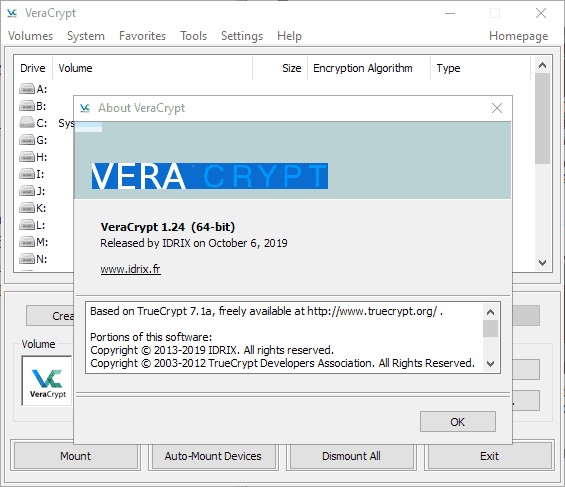
Step 2d: Define the LVM Logical Volumes over the LVM Physical Volume Step 2c: Create the LVM Physical Volume over the LUKS volume Sudo -i Step 2a: Format the partitions as LUKS The following steps need to be run as root. Step 2: Use Cryptsetup to format the disk


Now, I should stress, I’ve stopped using this layout as I went all-Linux on that machine, but… it might work for you now?! Also, shout out to 92aceshigh for referencing this post, and glad something I wrote helped you! ☺ Step 1:Create your partition table Turns out that since I wrote this in 2017, it’s not been fixed. In that post, someone asked if the broken upgrades is still a thing. LATE EDIT : I’ve just spotted a link to this post over on Level1Techs.

Yes, you can use that data volume to shunt the ISO image around. No, you don’t need to decrypt the data volume.
#Veracrypt multiboot windows 10#
PLEASE BE AWARE THAT ANY WINDOWS 10 UPGRADES WILL FAIL TO APPLY AS IT WILL NOT RECOGNISE THE VERACRYPT FILE SYSTEM! To resolve this, decrypt the Windows volume, perform the upgrade, re-encrypt it, then transfer the new recovery ISO image to the boot volume, following the method below. The shared volume (between Windows and Linux) will be encrypted with VeraCrypt.
#Veracrypt multiboot full#
The Windows environment will be encrypted with VeraCrypt, an open source Full Disk Encryption technology, while the Linux environment will be encrypted using Luks. The outcome of this build will leave you with the following:īoot up, go through the VeraCrypt bootloader, enter a password for Windows, or press escape to load the Grub bootloader where you will boot (K|L|X|)Ubuntu(| Mate| Gnome). ** WARNING ** This works for me – it might not for you! It was also missing details on the shared data drive between the two machines, so has been amended to include that. This post has been revised since it was initially published on 31st March due to errors found in the resulting build.


 0 kommentar(er)
0 kommentar(er)
